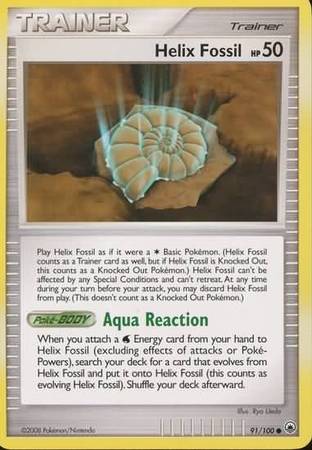
Who knew that playing Pokémon would lead to such an educational experience? It can only be expected when we’re talking about Fossil Pokémon. The Dome Fossil will see you get Kabuto, which evolves into Kabutops, and the Helix Fossil will see you get Omanyte, which evolves into Omastar. And of course, Aerodactyl is clearly inspired by the extinct Pterosaur. Lileep/Cradily is based on Sea Lilies that emerged during the Ordovician period, and unsurprisingly, Omanyte/Omastar are inspired from the 400 million year old Ammonite invertebrate group. Kabuto/Kabutops has drawn inspiration from an extinct invertebrate group called Trilobites. Indeed, several of the Fossil Pokémon are extremely similar to real life extinct creatures, bugs, fish, and reptiles, as well as mammals and dinosaurs.įor example, Anorith/Armaldo has been inspired from the aquatic extinct creature Anomalocaris. When it comes to Fossil Pokémon, parallels have been drawn to the world of paleontology.


Kobuto, for example, revived from a Dome Fossil, is Water-type on top of being part Rock-type.ĭo you ever play a Pokémon game and think, “wow, this is surprisingly insightful or accurate”? Fans have long drawn parallels of the Pokémon franchise to Japanese bug-catching culture, technological innovation, or birding culture. Plus, if it’s only part Rock-type, the disadvantages of having Rock-type may be countered by whatever other type of Pokémon it is. However, in offensive properties, they are almost unrivalled, resisted only by Fighting-type, Ground-type, and Steel-type. Whatever the reason, it will be Rock-type, or at least part Rock-type! Rock-type Pokémon do not have the best defensive protections, and are particularly susceptible to Grass-type and Water-type Pokémon. The other theory is that being Rock-type is a side effect of being revived from a Fossil. Omastar is the classic killer sea-snail that is described as being so slow and weak that it went extinct because it couldn’t. There are two theories as to why this is one is that the original Pokémon that became the Fossil in the first place was Rock-type, and it is that Rock-type DNA that allows it to become a Fossil in the first place. The Helix fossil has always been a staple among Pokémon fossils. Once you have successfully acquired a living Fossil Pokémon, it’s useful to know that all Fossil Pokémon are at least part Rock-type, if not fully Rock-type.


 0 kommentar(er)
0 kommentar(er)
